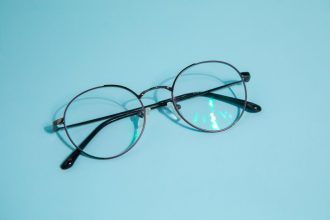Cannabis is a popular method for chronic pain relief and a great alternative to more traditional painkillers, including opioids. Hemp can reduce some types of chronic pain, like pain from nerve damage or inflammation.
Many people suffer from chronic pain because of cancer, diabetes, heart disease, etc. It is considered one of the most common causes of disability in the US. So it is a problem that cannabis can help you to overcome.
There are many medical options available for pain relief, but now many people choose marijuana for relief from chronic pain. So marijuana is a part of the cannabis family plant and contains the psychoactive compound THC. THC is the substance that can get you high and has the effect marijuana is famous for. However, there are over 100 cannabinoids in the cannabis plant. They all have unique effects on our bodies and work better together to reduce chronic pain.
However, remember that cannabis-based products are not approved by the FDA, and we need more research to confirm their effectiveness. Many people state that marijuana helps them to reduce pain and live better lives.
How can cannabis relieve pain?
Cannabis contains compounds that can relieve pain, nausea, and other conditions. Most studies are concentrated on researching CBD (cannabidiol ) and THC(tetrahydrocannabinol). However, how effective is marijuana for pain? There is one recent study that has started the debate around this question. This study looked at a cohort of people with chronic, noncancer pain and examined the impact of cannabis. It states that cannabis can’t help with noncancer chronic pain. However, the results are doubted, and the discussion is going on.
So when you know more about marijuana, let’s talk about five significant things to know about marijuana for chronic pain.
You don’t need to get high to feel pain relief
You may think that using marijuana for chronic pain might imply that you will be high that isn’t always true. The psychoactive properties of THC come from direct interactions with our receptors in the body. Usually, such effects may include drowsiness, changes in mood, cravings, etc.
However, many people state that small doses of cannabis have a positive effect without red eyes or euphoric feelings. Think about starting with low doses and increasing slowly to reach the perfect level.
The dispensaries’ workers can help you determine the best dose and the perfect strain. There are lots of strains you can try. It could be the Berry Pie strain or vanilla frosting strain because there is no perfect strain and dose for each person. You should try and experiment to reach your goals.
THC and CBD
THC is like the natural cannabinoid chemicals in our bodies. When people consume THC, it stimulates our receptors in the endocannabinoid system. This effect activates our reward system and can reduce chronic pain. As we have already mentioned, THC is a mind-changing substance. It binds to cannabinoid receptors and gets you high.
On the other hand, CBD doesn’t have any psychoactive effect, but it also interacts with pain receptors in our brain that bring pain-relieving effects.
Chronic pain is the largest use case of cannabis
A survey from 2017 published in the Journal of Health Affairs found that 84,6% of people who consume marijuana felt relief in their conditions. Chronic pain is the top reason for using marijuana for medical purposes. 62,2% of people use marijuana for chronic pain.
Cannabis affects our Endocannabinoid system(ECS)
Every animal has a system that interacts with cannabinoids. The endocannabinoid system might be what you weren’t told in anatomy class. It is a vast system of chemical compounds and receptors in our bodies and serves the purpose of maintaining homeostasis, mood, sleep, pain, etc.
The components of the system affect pain processing pathways and manage our pain. THC can improve the work of this system and relieve pain.
Smoking isn’t the only way to consume cannabis
The most popular method of consuming cannabis is smoking. You can do it by smoking raw flowers, vaporizing flowers, or using various equipment.
Another popular method is sublingual(when you place a substance under the tongue). Smoking and sublingual methods provide you with the best absorption of cannabinoids. When you put marijuana tincture under the tongue, cannabinoids enter the bloodstream without being metabolized.
However, there are also other ways to consume cannabis. Some of them are:
- Edibles are one more way to consume marijuana. Edibles include capsules, tablets, brownies, cookies, and other baked products you can ingest orally. You have to wait for the effect longer. Usually, it is about 2 hours. Remember that edibles might vary from mg THC to 200mg THC, so don’t forget to consider the dosage you will eat.
- Topicals. We have endocannabinoid receptors under our skin. Most topicals with THC are created to ease soreness in muscles and joints. They cause the effect of local pain relief but without any psychoactive effects.
So, we still need more information to ensure that cannabis can help people overcome chronic pain.














